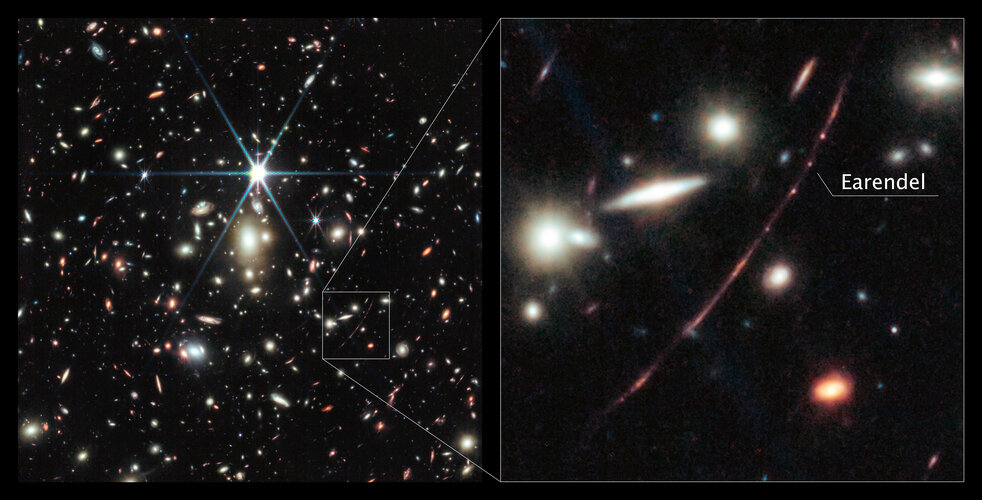This image from the NASA/ESA/CSA James Webb Space Telescope shows a massive galaxy cluster called WHL0137-08, and at the right, an inset of the most strongly magnified galaxy known in the Universe’s first billion years: the Sunrise Arc. Within that galaxy is the most distant star ever detected, first discovered by the NASA/ESA Hubble Space Telescope.
Webb’s NIRCam (Near-Infrared Camera) instrument reveals the star, nicknamed Earendel, to be a massive B-type star more than twice as hot as our Sun, and about a million times more luminous. Stars of this mass often have companions. Astronomers did not expect Webb to reveal any companions of Earendel since they would be so close together and indistinguishable on the sky. However, based solely on the colours of Earendel detected by Webb, astronomers think they see hints of a cooler companion star.
Webb’s NIRCam also shows other remarkable details in the Sunrise Arc. Features include both young star-forming regions and older established star clusters. On either side of the wrinkle of maximum magnification, which runs right through Earendel, these features are mirrored by the distortion of the gravitational lens. The region forming stars appears elongated, and is estimated to be less than 5 million years old. Smaller dots on either side of Earendel are two images of one older, more established star cluster, estimated to be 10 million years or older. Astronomers determined this star cluster is gravitationally bound and likely to persist until the present day. This shows us how the globular clusters in our own Milky Way might have looked when they formed 13 billion years ago.
[Image description: The image is split in half vertically to create two images. In the left image, a black background is scattered with hundreds of small galaxies of different shapes, ranging in colour from white to yellow to red. Some galaxies, mostly the redder galaxies, are distorted, appearing to be stretched out or mirror imaged. Just a little bit above the centre, there is a bright source of light, a star, with 8 bright diffraction spikes extending out from it. The right image is a zoomed-in portion of the image at the left, showing a particularly long, red, thin line that stretches from 1 o’clock to 7 o’clock. There are several bright dots, some thicker than others, along this line, with one labelled as Earendel.]



 Image:
Image: